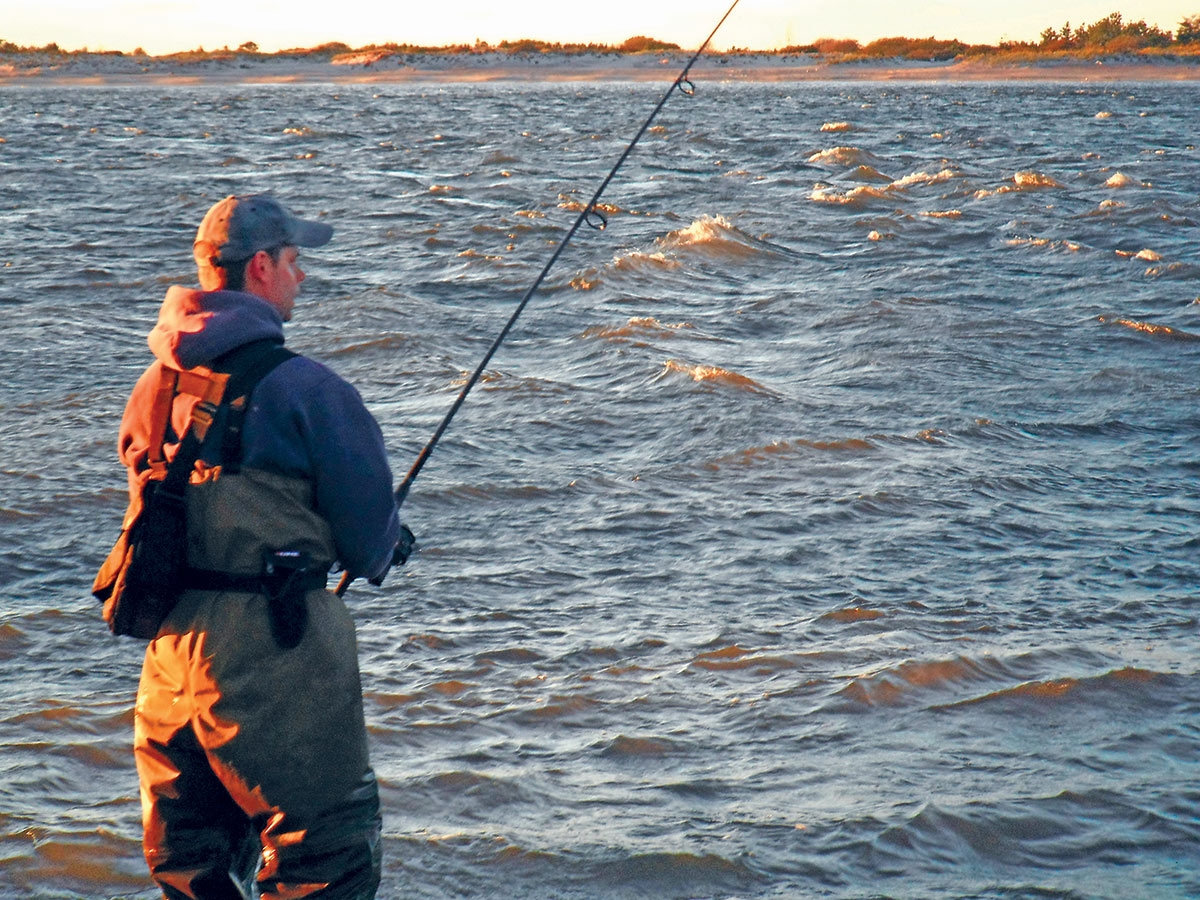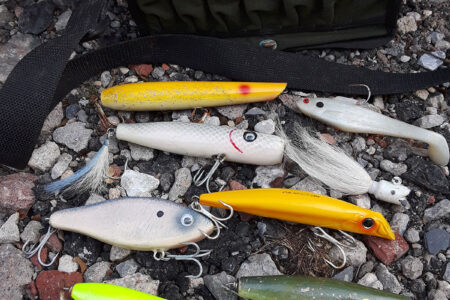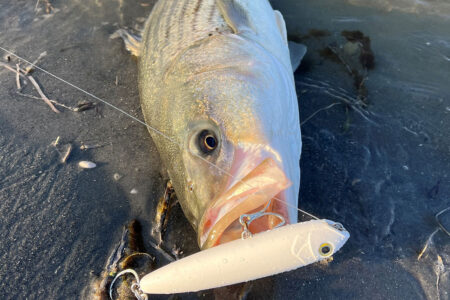
Adding the snap jigging technique to your bucktailing repertoire will add a whole new dimension to your surf game.
As many casters have discovered, bucktails can effectively be adapted to many different surf fishing situations. They are still the go-to choice for many jetty jockeys working inlets and breachways, they can be fished effectively in back bay areas, around bridges and along oceanfront beaches, whether they be sand or boulder studded shores.
There are just as many ways to fish a bucktail as there are areas of application. One that is growing in popularity among boat anglers but remains grossly overlooked by most surfcasters is snap-jigging. Most anglers believe this highly effective technique is the domain of light tackle anglers, but nothing can be further from the truth. Practicing snap-jigging in the surf does require some modifications compared to the light tackle approach, but the basic concept is still in play. Those sharp lifts and drops of your jig replicate an injured baitfish in its last dying throes, something gamefish can’t seem to resist and is the ticket to turning on fish when they are not aggressively feeding.
When fishing bucktails in cross current situations – inlets and breachways, from shorelines bordering bridges, or rips formed by a point – most casters angle their cast up-current (the angle dependent on the speed of current and the weight of your jig) and then allow the lure to swing slowly along, or just above the bottom, and retrieve just fast enough to keep the slack out of the line. The weight of the lure and retrieve speed will have to be adjusted as the current increases or decreases. A similar approach can be taken along an ocean or sound beach if there is a sweep in one direction caused by wind or wave action. Some areas may have a substantial current running parallel to the beach, lending themselves to the same technique. In addition to the weight of the bucktail, the design of the head and the amount of hair can also play into the sink rate of the lure, which will affect the angle of your cast. When it comes to snap-jigging, maintaining contact while your lure is descending to the bottom is critical.
Make no mistake about it, snap-jigging is work and continuously jerking a 10- or 11-foot rod can get tiring. Fortunately, the current wave of light-weight surf rods helps reduce the fatigue factor. Also, you want a stiffish tip for this technique so that the energy you are expending with the exaggerated jerking motion is being transmitted to the lure and not lost in your rod tip. For the same reason, I also like to tie direct to the jig with a 4-foot length of fluorocarbon leader. Braided lines are an absolute must. The finer diameter and reduced drag on your line allows you to get down to the bottom with less weight, and also reduces any bow in your line below the surface. That and the lack of stretch provide the “feel” necessary to be successful at bucktailing in general, and snap-jigging in particular. Since many of your strikes will come on the dropback, a high visibility line can be a help in detecting when a fish picks up your jig.
Once you make your cast, the instant you feel the jig reach bottom, you want to give an exaggerated upwards jerk to your rod (from as close to 3 o’clock and up to between 1and 2 o’clock). Keeping the butt of the rod between your legs will save a lot of wear and tear on your arms and shoulders. Once you reach the top of this jigging motion, slowly lower your rod until the jig reaches bottom. You must maintain contact with the lure throughout the descent – that might mean slowly reeling as the lure falls, or in some cases you might not be reeling at all. As the lure begins to swing in the current, it will begin to rise. In order to keep it in the strike zone, you can extend the swing by opening your bail during the descent until you regain contact with the bottom. You may repeat this action three or four times on some casts. It is not uncommon for hits to come on the back end of the lure swinging down-current. If you feel any bump or hesitation in your contact with the lure, immediately set the hook. Whether you add a trailer to your jig or not is up to you. I’ve had a lot of success with fishing a plain bucktail, and also with a trailer.




